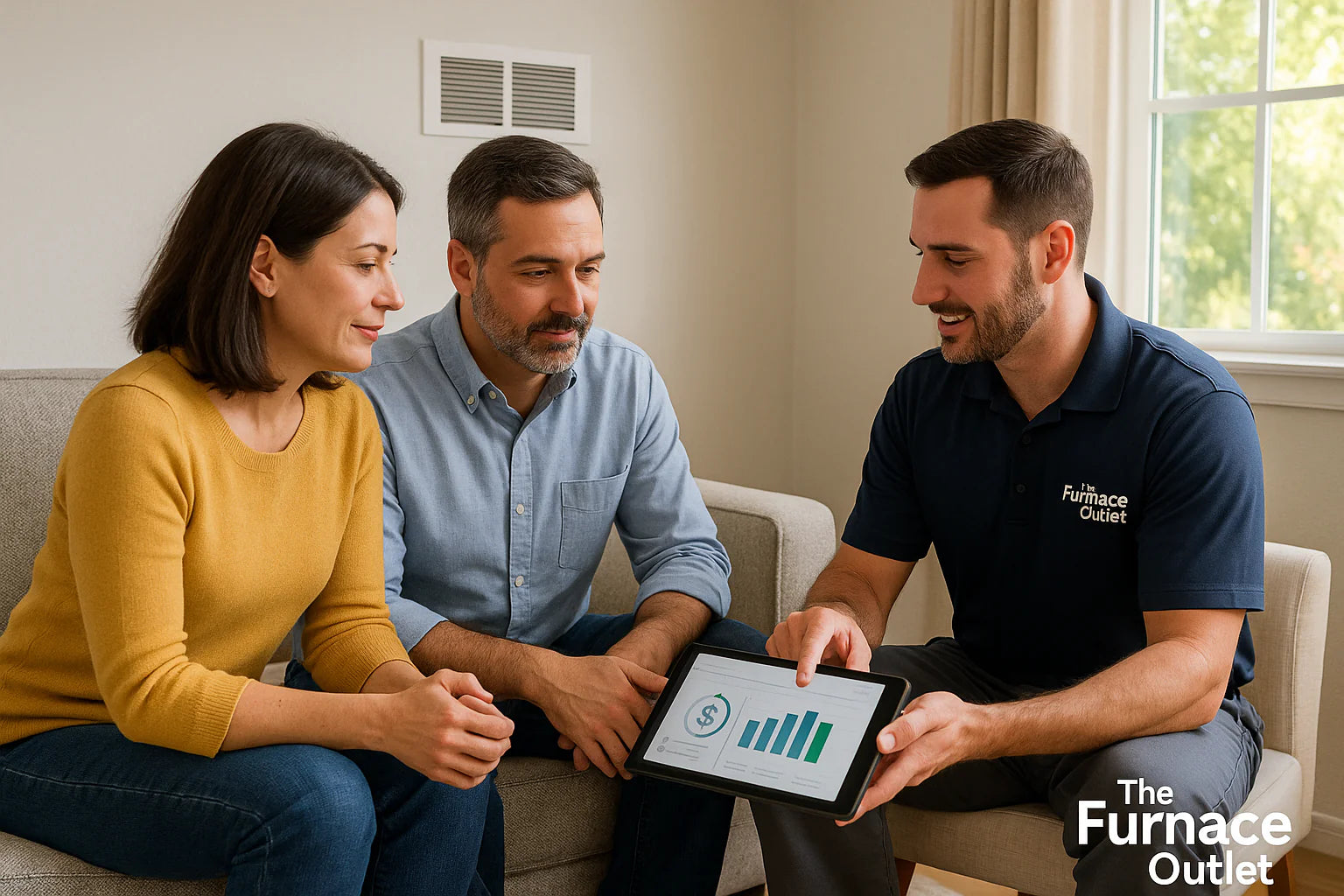What Does “Heat Pump vs. AC” Really Mean?
Picture two houses on the same block. House A runs a heat pump, moving heat in and out of the home like a two-way conveyor belt. House B runs a central air conditioner for summer cooling and a separate furnace for winter warmth. Both families stay comfortable, but their gear and their utility bills look different. Keep that mental image as we walk through costs, climate fit, and long-term value.
How Each System Moves Heat (Plain-English Physics)
A compressor, a refrigerant loop, and a fan are the shared basics. The key twist is direction:
-
Heat pumps reverse the refrigerant flow, pulling outdoor heat inside on cold days and pushing indoor heat outside on hot days.
-
Central ACs only push heat out. Winter demand shifts to a furnace, often gas-powered.
This dual-direction trick is why heat pumps wear the “all-electric” badge and why models like our R-32 heat pump systems can hit stellar efficiency ratings year-round.
Upfront Costs: Why One Price Tag Doesn’t Tell the Whole Story
Real-world installs show heat pumps averaging $4,200–$7,600, while central ACs land around $3,800–$7,500. At first glance, AC seems cheaper—until you add the price of a new furnace. For homes with aging heaters, that combo often outprices a single heat-pump install. Still deciding? Compare quotes side-by-side with our free Design Center. A 15-minute call can reveal hidden ductwork or electrical tweaks that swing the budget.
Operating Costs and Energy Bills Across the Seasons
In moderate climates (think Nashville or Raleigh), a heat pump may shave $300–$400 a year off combined heating-and-cooling bills. Why? It moves heat; it doesn’t create it by burning fuel. In hotter regions where winter loads are tiny, a high-SEER R-32 air-conditioner condenser plus an existing furnace can still win. Always compare local kilowatt-hour rates to gas prices; your utility bills write the final verdict.
Climate Check: Does Your ZIP Code Favor a Heat Pump?
Heat pumps thrive when winter lows stay above about 25 °F. Live in Phoenix? A pump is a slam dunk. Minneapolis? A “cold-climate” model or dual-fuel backup may be wiser. Run your address through NOAA’s heating-degree-day maps, then browse our dual-fuel packaged units if deep freezes are your norm.
Environmental Impact: Cutting Carbon Without Cutting Comfort
Switching from an oil or gas furnace to an electric heat pump can reduce household CO₂ by 30–50 %, especially where the power grid leans toward renewable energy. Even if your local grid is coal-heavy today, utilities are greening fast. Upgrading to an eco-friendly R-32 packaged system future-proofs you against rising carbon penalties and refrigerant phaseouts.
Maintenance and Lifespan: Keeping Things Running for 15 Years
Both systems want the same basics: filter swaps every 1–3 months, a spring coil wash, and a fall refrigerant-pressure check. A heat pump’s reversing valve adds one more moving part, but failure rates stay low with annual tune-ups. Need DIY tips? Our Help Center has step-by-step guides and filter size charts you can bookmark.
Incentives and Rebates: Free Money You Shouldn’t Ignore
Federal tax credits now cover 30 % of heat-pump costs (up to $2,000), and many utilities pile on stackable rebates. Central AC rarely qualifies for the same level of aid. Before signing a contract, check DSIRE’s rebate database or let our team flag offers when you request a quote via the Contact Us page. Don’t leave free dollars on the table.
When a Hybrid “Dual-Fuel” System Makes Sense
A dual-fuel package mates a heat pump with a high-efficiency gas furnace in one cabinet. The pump handles 60–70 % of annual heating hours; the furnace kicks in only when temps plunge. That combo can trim carbon, tame bills, and dodge the steep kilowatt draw of supplemental electric strips. Explore ready-to-ship commercial packaged gas/AC units if you manage multifamily or light-commercial sites.
Decision Framework: A Simple Checklist for Homeowners and Pros
-
Climate Profile: Are winters mild, moderate, or brutal?
-
Existing Equipment: Is your furnace near end-of-life?
-
Utility Rates: Compare $/kWh vs. $/therm for gas.
-
Upfront Budget vs. Long-Term Savings: Factor in rebates and energy costs over 15 years.
-
Electrical Panel Capacity: Heat pumps may need a breaker upgrade.
Still unsure? Call our experts or browse ready-to-install room AC units and ductless mini-splits for zone-specific fixes.
Before You Call the Installer
- Size First, Buy Second: Insist on a Manual J load calculation—guesswork kills efficiency.
- Mind the Ducts: Leaky ducts can eat 20 % of system output; seal them while the attic is open.
- Ask About Refrigerant: R-32 and other low-GWP blends cut future compliance headaches.
- Plan for Surge Protection: A $100 device can save a $2,000 compressor from brownouts.
-
Keep the Warranty Paperwork: Register equipment within 60 days and log serial numbers in one safe place.







